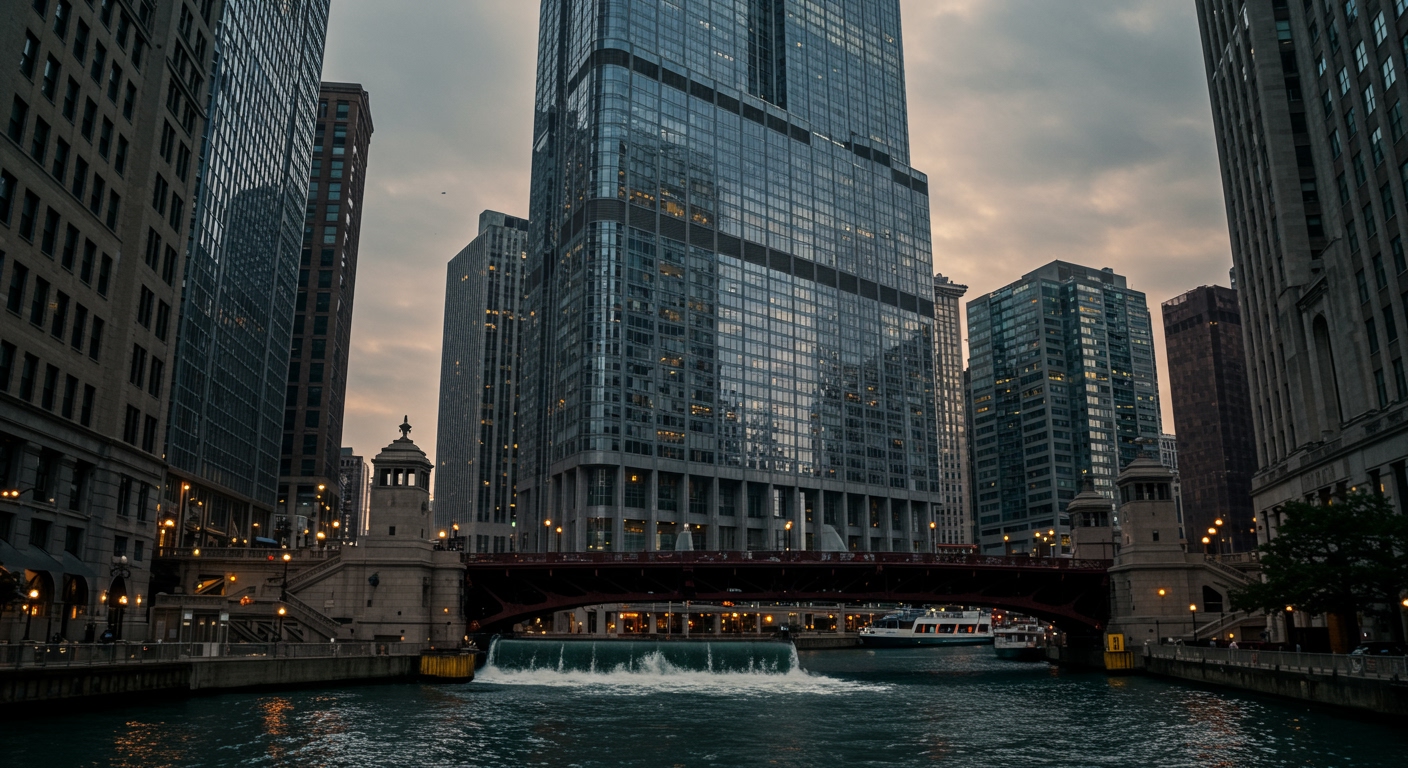CHICAGO – Trump International Hotel and Tower in downtown Chicago has agreed to pay $4.8 million to resolve a lawsuit alleging significant violations of federal and state environmental laws. The settlement addresses claims that the luxury building’s cooling system operations resulted in the death of thousands of fish and other aquatic organisms in the adjacent Chicago River over a period of several years.
The agreement, reached in Illinois state court, brings an end to legal action pursued by environmental groups including Friends of the Chicago River and the Sierra Club, alongside the Illinois Attorney General. The lawsuit centered on the tower’s massive water intake system.
Understanding the Environmental Allegations
At the heart of the complaint were accusations that the Trump Tower’s cooling system routinely withdrew vast quantities of water from the Chicago River. Specifically, the lawsuit alleged the building was pulling in up to 20 million gallons of water per day for its operations. This process, according to the plaintiffs, had devastating environmental consequences.
The method of drawing water inevitably led to fish and other smaller aquatic life being drawn into the intake pipes or becoming trapped against protective screens designed to filter larger debris. This impingement and entrainment process is a well-documented environmental hazard for aquatic ecosystems, disrupting populations and potentially harming the overall health of the waterway.
Environmental advocates and state officials contended that these activities constituted a violation of environmental regulations designed to protect waterways from harmful industrial practices and preserve aquatic biodiversity.
Legal Proceedings and Prior Rulings
The lawsuit against the Trump Tower highlighted ongoing concerns about the environmental impact of large urban structures on natural resources, even within bustling city centers. The legal challenge gained significant traction when a federal judge previously weighed in on the matter.
In a key earlier ruling, a federal judge determined that the Trump Tower’s water intake practices were not merely technical violations but constituted a public nuisance and an environmental hazard. This finding underscored the severity of the alleged harm and provided a strong legal basis for the plaintiffs to seek significant redress.
The litigation process involved detailed scrutiny of the building’s operational permits, water usage data, and the ecological impact observed in the affected stretch of the Chicago River. Experts presented evidence detailing the mechanisms by which fish and other organisms were harmed by the powerful water intake system.
Details of the Landmark Settlement
The $4.8 million settlement is notable not only for its substantial figure but also for its context within Illinois environmental law. Legal experts following the case indicate that this resolution appears to be the largest Clean Water Act-related resolution in Illinois state court history. While the Clean Water Act is a federal statute, provisions allow for citizen suits and state enforcement action to uphold its standards, which was the basis for the plaintiffs’ claims.
The agreement requires the Trump International Hotel and Tower to pay the agreed-upon amount to settle the claims of environmental damage and non-compliance. Such settlements typically involve a combination of penalties for past violations and funding for projects aimed at mitigating environmental harm or improving environmental conditions.
Funding Future Restoration Efforts
A significant portion of the settlement funds has been specifically allocated to support ecological improvement in the Chicago River. The agreement includes directing $3 million towards a Supplemental Environmental Project. These projects are court-approved initiatives that a defendant in an environmental case agrees to undertake or fund to benefit the environment, in addition to paying monetary penalties.
This particular Supplemental Environmental Project is specifically aimed at funding a fish habitat restoration program in the Chicago River. The river, once heavily polluted, has seen significant improvements in water quality over recent decades and is increasingly supporting diverse fish populations. However, habitat degradation remains a challenge. The allocated funds are expected to support efforts such as creating or enhancing spawning areas, improving riverbank vegetation, and implementing other measures designed to make the river a healthier environment for fish and other aquatic life.
Environmental groups involved in the suit praised this aspect of the settlement, viewing it as a crucial step towards repairing some of the ecological damage alleged and investing in the future health of the urban waterway.
Broader Implications for Urban Water Use
The Trump Tower settlement underscores the environmental responsibilities of large buildings and industrial facilities located near water bodies, even those in dense urban environments. It highlights the necessity of ensuring cooling and other operational systems comply with environmental regulations and do not unduly harm aquatic ecosystems.
The case serves as a reminder that environmental stewardship extends to addressing the cumulative impacts of water usage in urban rivers. Regulatory bodies and environmental advocates continue to monitor water intake practices, pushing for technologies and operational procedures that minimize harm to fish and other wildlife.
This resolution sets a precedent for future environmental enforcement in Illinois and potentially other states, emphasizing that significant penalties can be imposed for violations that harm aquatic life, and that settlements can include substantial funding for direct environmental restoration projects.
Ultimately, the $4.8 million agreement aims to hold the property accountable for past actions while directing crucial resources towards enhancing the ecological vitality of the Chicago River, a vital natural asset within one of America’s largest cities.











